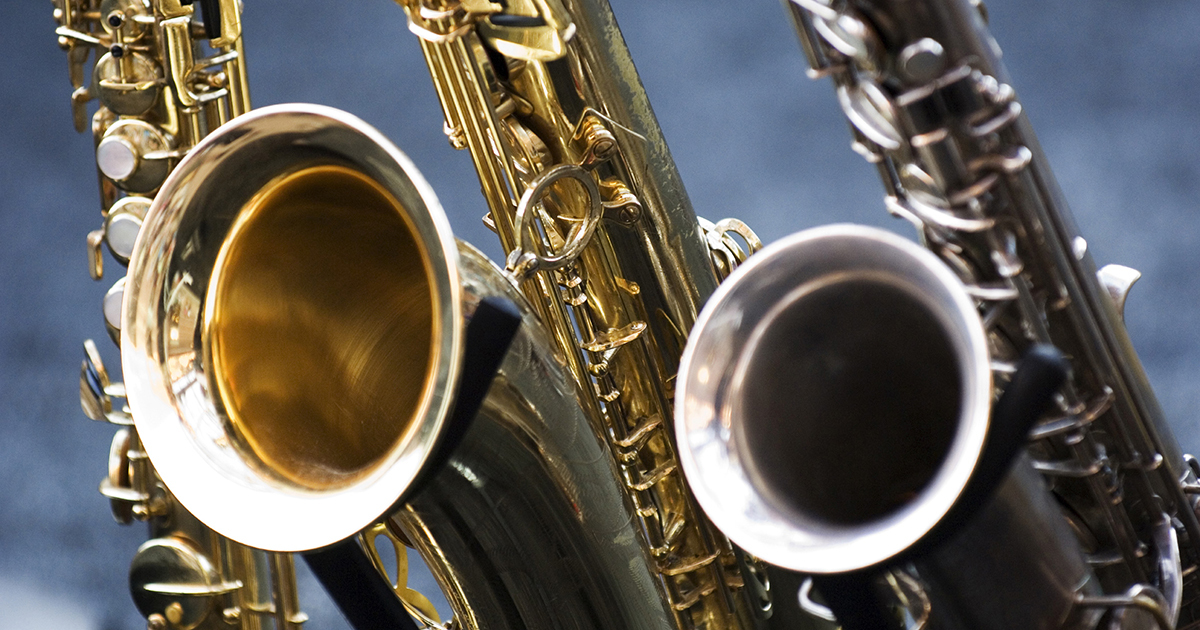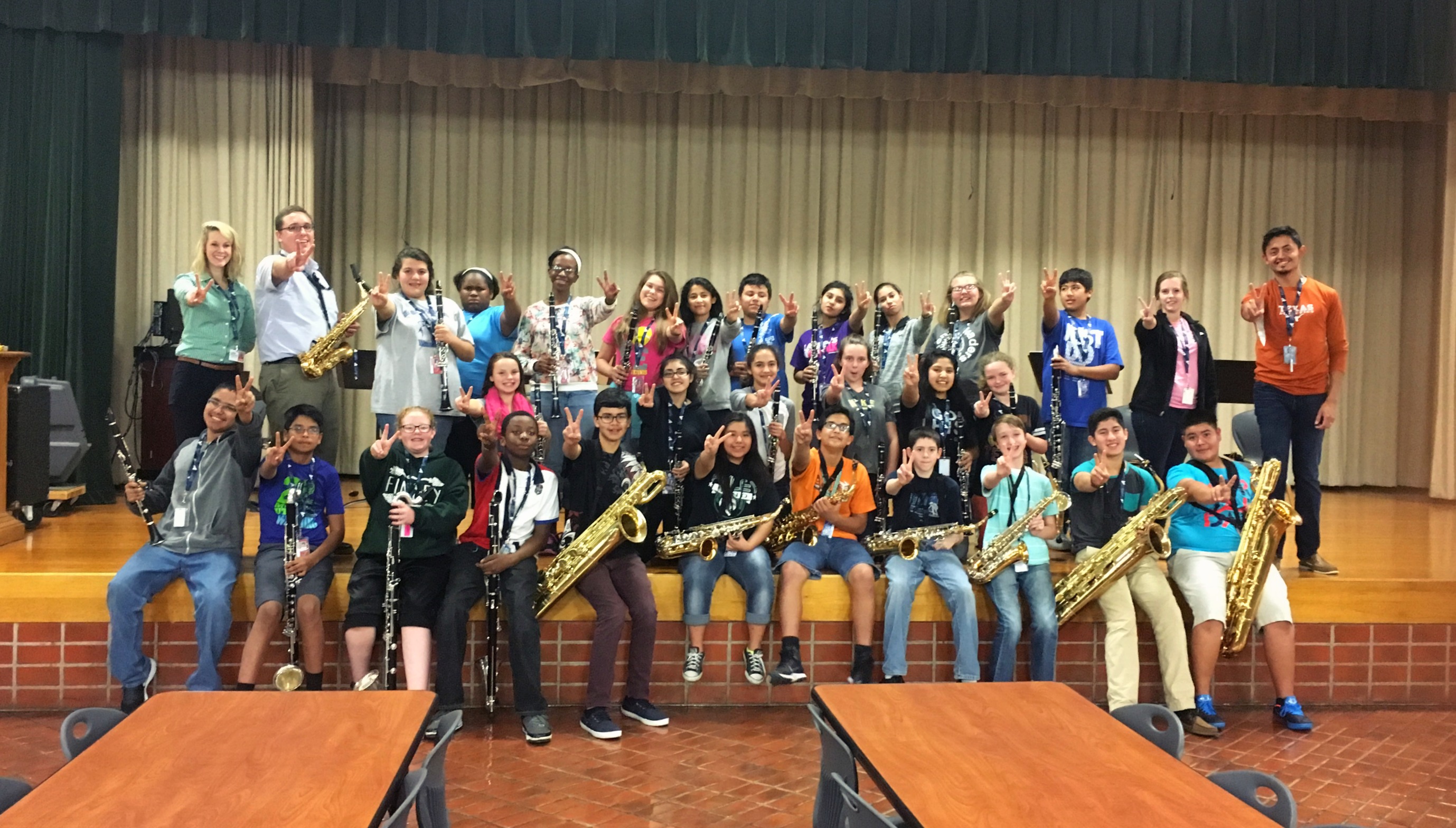Classical and Jazz Saxophone, Can You do Both?
Some Insight from Scott Campbell
Date Posted: May 03, 2016

VandorenUSA: Your degrees have emphasized both jazz and classical saxophone. Were you interested in both or did you feel it was necessary to be fluent in both areas?
Scott Campbell: As an undergraduate student, I was only interested in jazz. However, this interest expanded into classical saxophone as well. It is my opinion that musicians should be versatile; the more versatile a saxophonist is, the more opportunities they will have. Ulf Erikson wrote a great dissertation and explained the importance for saxophonists to be able to perform fluently in both jazz and classical idioms. Because of our instrument’s strong ties to jazz, it is expected that we are fluent in jazz and improvisation. This is true for the popular mainstream as well as in university settings. Also, many of today’s music programs are strongly rooted in the western European classical tradition. This, combined with the wonderful efforts of concert saxophonists such as Cecil Leeson, Larry Teal, Eugene Rousseau, Fredrick Hemke, and Don Sinta in demonstrating the saxophone’s ability as a concert instrument, has created a demand for saxophonists to perform and teach classical music at institutions of secondary and higher education. It is vital for saxophonists to be fluent in both areas.
Do you combine both jazz and classical elements in your lessons?
SC: At UNT I teach 13 undergraduate saxophone students. Though they are jazz studies, music education, performance, and composition majors, lessons are very much of a classical nature. We gear the learning process toward gaining competency and a strong foundation in traditional as well as modern concert music. With my middle and high school students, I try to include as much variety as possible. In the fall, they usually prepare for All-Region and All-State auditions which consists of working on the selected etudes of that year. During spring they work on quartet and solo music. During summer, they work on jazz. So, it is rather seasonally-based. During all of these times, however, they are working on tone studies, technique development and sight-reading competency. There are down times that arise throughout the year. I am also not afraid to dive into popular music either like “Uptown Funk” or “Don‘t Stop Believin’”! Every student is different and as teachers, we must cater to their interests. In the words of Marcel Mule, “in order to have the best results in the teaching-learning process, the student must find some enjoyment in playing every day. If he does not, of what benefit is the study of music?”
Regarding your practice routine, are there specific days you practice jazz and classical or do you try to incorporate both areas in your playing? If so, what are some tactics you can give to saxophonists interested in both classical and jazz playing?
SC: In terms of practicing, I do not set specific days to specific idioms. My practice sessions are extremely goal oriented. For example, looking back in the last month, I have needed to prepare 11 etudes for 5 different all-region masterclasses, two hours of solo repertoire for a jazz gig and two hours of popular music for a benefit Gala. I try to have my practice sessions queued with whatever my next performance or masterclass requires. However, when time avails itself, I try to keep a balance of keeping up solo concert music and working standards, especially working over the chord changes of tunes and incorporating more vocabulary into my improvisation. However, it certainly has not always been like this. I remember carrying around a little laminated card that had a list of all the basics I needed to cover in a given day, tone development, technique (scales, arpeggios and patterns), etudes, solo repertoire, jazz transcriptions, chord changes, then doubles (clarinet and flute). I remember carrying this card around and keeping track daily of how much time I was able to get in on each.
It is very important to put in the time but being goal oriented and practicing intelligently are most important. Plan where you want to go, figure out the needed steps (big and little) to get there and get to work. I need to add here that I have an incredibly supportive wife and patient children. They are helpful when I knuckle down to get work done and they really inspire me to work more effectively as it directly impacts and benefits them.

Since you are fluent in both jazz and classical styles, have you find yourself with more opportunities to perform?
SC: Wonderful opportunities have been given to me to perform with the Dallas Pops, Plano Symphony, and with orchestras at UNT. This would not have been possible without the ability to perform classical idiomatically. Dr. Eric Nestler and Dr. Richard Schwartz have been my two primary classical teachers and I have learned so much under their tutelage. Honestly though, most of the professional performance work I receive is in the jazz and popular genres. Without having a foundation in jazz, I would not be able to have those opportunities! Again, I have had great teachers like Larry Cook, Dustin Mollick, and Tito Charnenco. Having a foot in classical and a foot in jazz has really benefited my ability to teach as well. It has been an honor to serve as a doctoral teaching fellow at UNT for three years and be part of such an outstanding program led by Dr. Eric Nestler and Brad Leali. The students are wonderful. I also have a very large studio of middle and high school students. If it was not for my classical training, I certainly would not be able to serve my students and their programs to the level they deserve.
Regularly, I have high school students performing Jacques Ibert’s Concertino da Camera, Glazunov’s Concerto or quartet repertoire like Eugene Bozza’s Andante et Scherzo. Right now I have a student working on the Dahl Concerto (I usually do not condone repertoire like this for high school students but he is nailing it). My classical studies really helped prepare me for this type of teaching and I want to help my students succeed to the fullest extent. Likewise, with my middle and high school students, we work on jazz all summer to prepare for All-State jazz auditions. I have had classical All-Staters for the last three years. This year I just had four students tape for jazz All-State. It just thrills me to see these young saxophonists succeed like this. I am grateful for educational opportunities I have had to gain a foundation in both classical and jazz to help guide my students in this way.
You have a wonderful website for your students and a rather large private studio. Why do you see the need to have a website?
SC: We live in a very web oriented society. Virtually all my students and their parents have smartphones now. Some even tease me for having an “outdated” iPhone. A website provides a platform for me to communicate with my students and give them resources. I also run all my books and scheduling online and this acts as a “command center” if you will. There are a few companies providing online resources like this for music teachers. I find it very convenient and helpful.
How do you choose the resources to post on your website? Are they educational materials a teacher passed along to you?
SC: It seems all my teachers have had great resources to share; all good music teachers do. I have tried to make these available for my students to use or learn about, along with others I have found throughout the years (it is time I update this as I have so many more tools and helpful resources). Most of these are geared toward helping students become more independent and intelligent musicians. Students are able to use these tools to make their practice time more effective.
Subscribe to the We Are Vandoren E-newsletter (WAVE) to receive 4 weekly articles for Performers, Students, and Educators